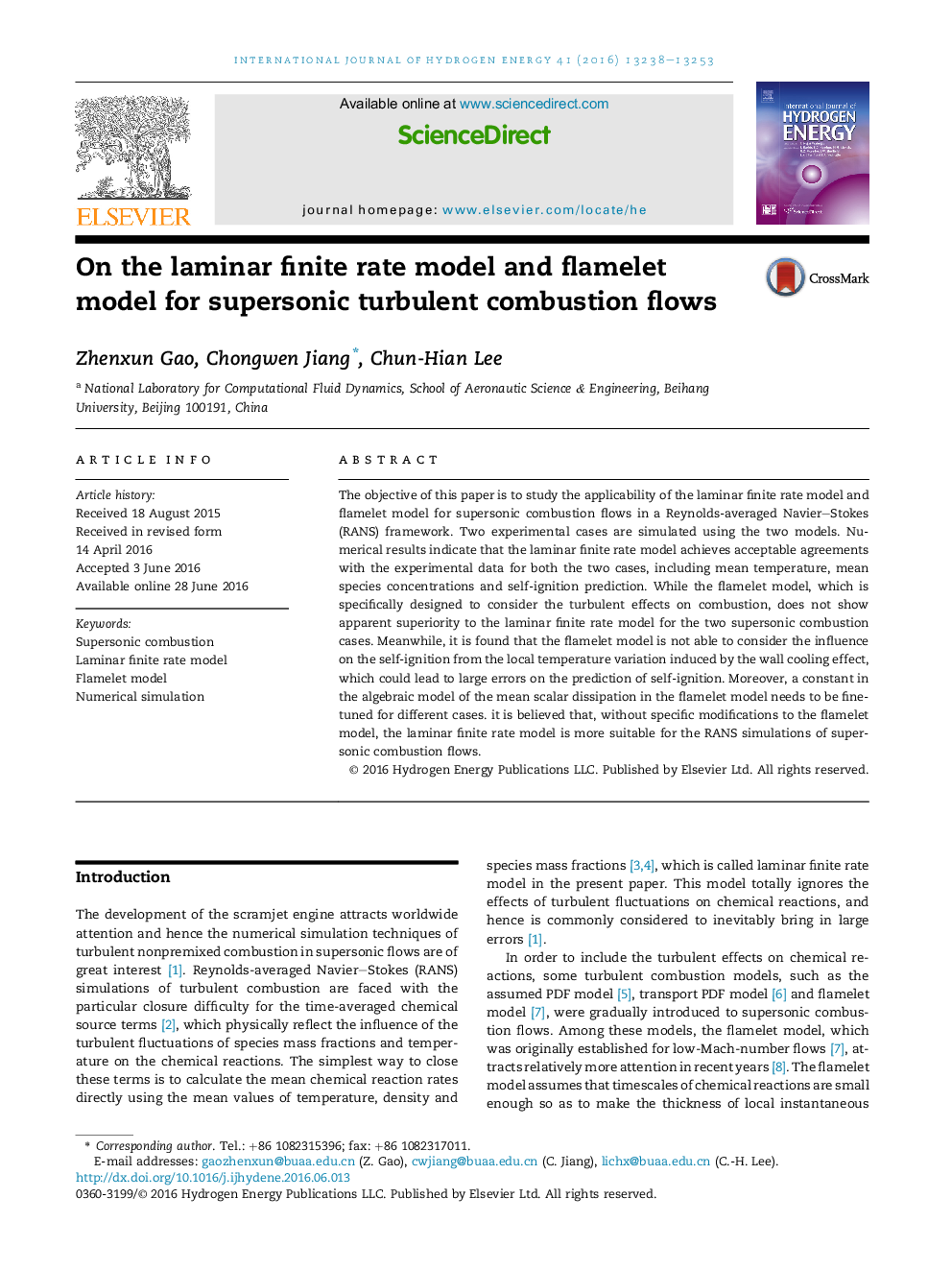| Article ID | Journal | Published Year | Pages | File Type |
|---|---|---|---|---|
| 1268238 | International Journal of Hydrogen Energy | 2016 | 16 Pages |
•Comparative study of the laminar finite rate model and flamelet model is performed.•Laminar finite rate model is found to give results with acceptable accuracy.•Flamelet model does not show expected superiority to the laminar finite rate model.•An intrinsic problem for the flamelet model applied in supersonic flows is presented.
The objective of this paper is to study the applicability of the laminar finite rate model and flamelet model for supersonic combustion flows in a Reynolds-averaged Navier–Stokes (RANS) framework. Two experimental cases are simulated using the two models. Numerical results indicate that the laminar finite rate model achieves acceptable agreements with the experimental data for both the two cases, including mean temperature, mean species concentrations and self-ignition prediction. While the flamelet model, which is specifically designed to consider the turbulent effects on combustion, does not show apparent superiority to the laminar finite rate model for the two supersonic combustion cases. Meanwhile, it is found that the flamelet model is not able to consider the influence on the self-ignition from the local temperature variation induced by the wall cooling effect, which could lead to large errors on the prediction of self-ignition. Moreover, a constant in the algebraic model of the mean scalar dissipation in the flamelet model needs to be fine-tuned for different cases. it is believed that, without specific modifications to the flamelet model, the laminar finite rate model is more suitable for the RANS simulations of supersonic combustion flows.
